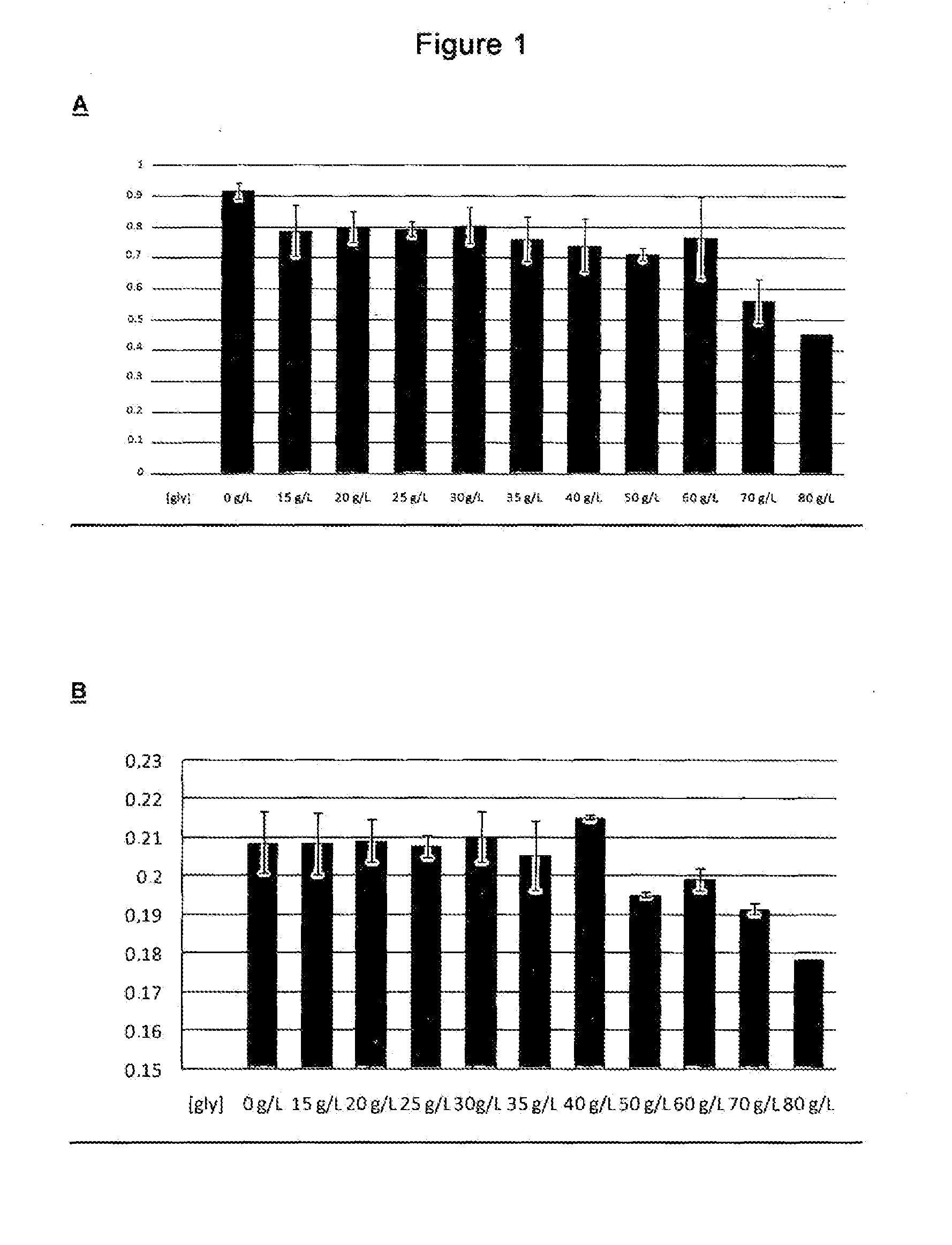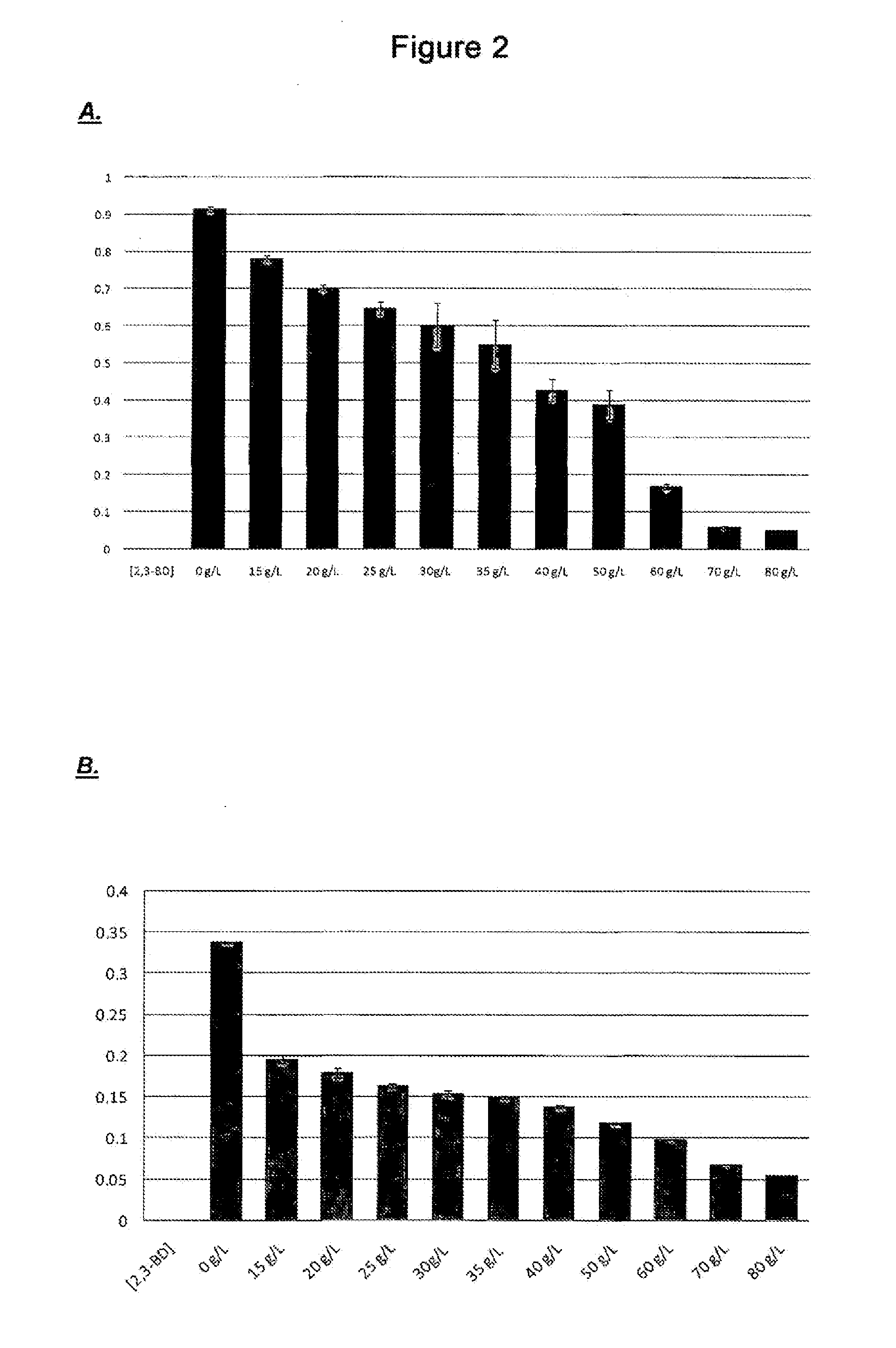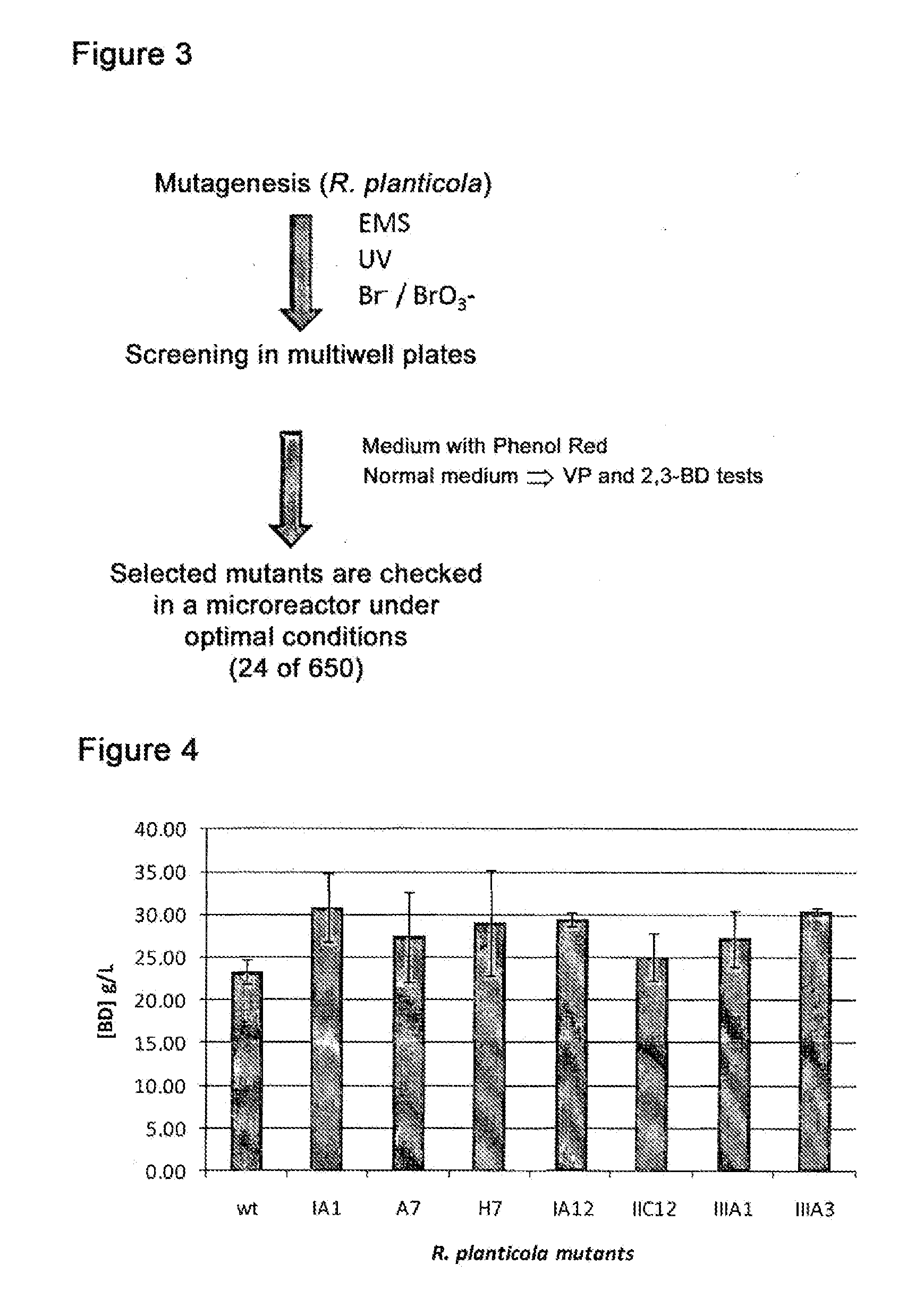Method for producing 2,3-butanediol using improved strains of raoultella planticola
a technology of raoultella planticola and raoultella spp., which is applied in the field of new mutant strains, can solve the problems of low productivity, unsuitable strains of this species for industrial biotechnology, and high risk for workers
- Summary
- Abstract
- Description
- Claims
- Application Information
AI Technical Summary
Benefits of technology
Problems solved by technology
Method used
Image
Examples
example 1
[0099]Producing 2,3-butanediol from Glycerol Using Wild-Type R. Planticola: Selecting Optimal Operating Conditions with a Simple Culture Medium
[0100]Optimal operating conditions were determined with a simple culture medium (medium C, MC) suitable for working at higher fermentation scales for producing 2,3-butanediol using R. planticola wild-type strain CECT843 from pure glycerol as a carbon source.
[0101]Medium MC has the following composition per liter: 2 g of NH4Cl, 6 g of KH2PO4, 12 g of Na2HPO4, 1 g of NaCl, 246 mg of MgSO4.7H2O, 14.7 g of 14.7 g / L CaCl2-2H2O.
[0102]An experiment design contemplating the following factors was implemented:[0103]Temperature: the interval studied was 26 to 35° C.[0104]Type of culture medium: assays were performed in two synthetic media, medium A and medium C.[0105]Concentration of yeast extract: the interval studied was 0.5 to 1.5 g / L[0106]Addition of citric and / or acetic acid: the effect of the addition of either organic acid at a concentration of 0...
example 2
[0115]Producing 2,3-butanediol from Glycerol Using R. Planticola CECT8158 (Mutant IA1) in Medium MC.
[0116]An experiment was conducted in batch mode at the orbital incubator level in 50 mL bottles with 10 mL of culture medium to evaluate the 2,3-butanediol production capacity of R. planticola mutant strain CECT8158 in synthetic medium MC.
[0117]The conditions optimized for wild-type strain CECT843 and modified synthetic medium MC, with an initial concentration of pure glycerol of 60 g / L, were used. The fermentation conditions were set at: temperature 28° C.; stirring 175 rpm. Initial pH of the medium was 7, and it developed freely throughout fermentation, dropping to values close to 5.
[0118]The results are shown in Table 9, which illustrates the values obtained for the glycerol consumed in g / L, [glycerol]cons; concentration of 2,3-butanediol produced, [BD]max; maximum concentration of acetoin produced, [acetoin]max; η is the yield in g / g; maximum concentration of ethanol produced, [Et...
example 3
[0120]Producing 2,3-butanediol from Glycerol Using R. Planticola CECT8159 (IIIA3) in Medium MC
[0121]An experiment was conducted in batch mode in 50 mL bottles with 10 mL of culture medium to evaluate the 2,3-butanediol production capacity of R. planticola mutant strain IIIA3 in synthetic medium.
[0122]The conditions optimized for the wild-type strain and modified synthetic medium MC, with an initial concentration of pure glycerol of 60 g / L, were used. The fermentation conditions were set at: temperature 28° C.; stirring 175 rpm. Initial pH of the medium was 7, and it developed freely throughout fermentation, dropping to values close to 5.
[0123]The results are shown in Table 10, which illustrates the values obtained for the glycerol consumed in g / L, [glycerol]cons; concentration of 2,3-butanediol produced, [BD]max; maximum concentration of acetoin produced, [acetoin]max; η is yield in g / g; maximum concentration of ethanol produced, [EtOH]max.
TABLE 10Producing 2,3-butanediol using R. p...
PUM
| Property | Measurement | Unit |
|---|---|---|
| Temperature | aaaaa | aaaaa |
| Time | aaaaa | aaaaa |
| Time | aaaaa | aaaaa |
Abstract
Description
Claims
Application Information
 Login to View More
Login to View More - R&D
- Intellectual Property
- Life Sciences
- Materials
- Tech Scout
- Unparalleled Data Quality
- Higher Quality Content
- 60% Fewer Hallucinations
Browse by: Latest US Patents, China's latest patents, Technical Efficacy Thesaurus, Application Domain, Technology Topic, Popular Technical Reports.
© 2025 PatSnap. All rights reserved.Legal|Privacy policy|Modern Slavery Act Transparency Statement|Sitemap|About US| Contact US: help@patsnap.com



